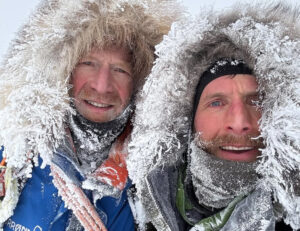What does 600,000 years of natural selection get you? If you’re a woolly mammoth, it gets you the trademark woolly coat and insulating fat deposits that helped you survive the perilous Siberian landscape during the last Ice Age.
Scientists undertaking the first large-scale comparison of woolly mammoth genomes believe they’ve identified the genes that allowed the earliest woolly mammoths to evolve into the hirsute, Rubenesque specimens we’re all familiar with. The team published its findings in the journal Current Biology earlier this month.
“The very earliest woolly mammoths weren’t fully evolved. They possibly had larger ears, and their wool was different — perhaps less insulating and fluffy compared to later woolly mammoths,” Love Dalen, a professor of evolutionary genomics at the Centre for Palaeogenetics in Stockholm and senior author on the paper, wrote.
Dalen and his team reached that conclusion by comparing the genomes of 22 “recent” Siberian mammoths (alive within the last 100,000 years) with the genome of a specimen that lived roughly 700,000 years ago.
“We wanted to know what makes a mammoth a woolly mammoth,” David Diez-del-Molino, a paleogeneticist who also worked on the paper, said.

One of the tusks used to sequence the Siberian woolly mammoth genome. Photo: Love Dalen
600,000 years of natural selection
The researchers found that the older specimen — dubbed Chukochya — had the basic building blocks of every woolly mammoth hardwired into its DNA. But it took 600,000 years of natural selection in Siberia for those traits — smaller ears, thicker fur, and better fat-adapted metabolism — to become exaggerated and better suited to the privations of northern latitudes during the Ice Age.
“Having the Chukochya genome allowed us to identify a number of genes that evolved during the lifespan of the woolly mammoth as a species,” Dalen said. “This allows us to study evolution in real-time, and we can say these specific mutations are unique to woolly mammoths, and they didn’t exist in its ancestors.”

An artist’s rendering of a woolly mammoth family. Photo: Shutterstock
The scientists also uncovered some genes that many cold-adapted mammals all seem to share.
“We found some highly evolved genes related to fat metabolism and storage that are also found in other arctic species like reindeer and polar bears, which means there’s probably convergent evolution for these genes in cold-adapted mammals,” said Diez-del-Molino.
Next up for this team? Taking a peak under the hood of the North American woolly mammoth genome to see how it stacks up.
A not-so-mammoth meatball
Woolly mammoths are having quite a heyday. Biotech company Colossal recently announced it was on track to clone a woolly mammoth by 2027. Meanwhile, lab-grown meat company Vow grabbed headlines last month when it claimed to produce a “mammoth meatball” using a gene found in mammoth DNA.
But Dalen, who certainly knows what he’s talking about in the mammoth gene department, told Business Insider that the gene used to produce the meatball is “identical” to one found in Asian elephants.
Vow made a giant meatball from lab-grown elephant meat, essentially. Not nearly as sexy as mammoth meat, but still easier than using spears — not to mention much better for living, breathing elephants.






